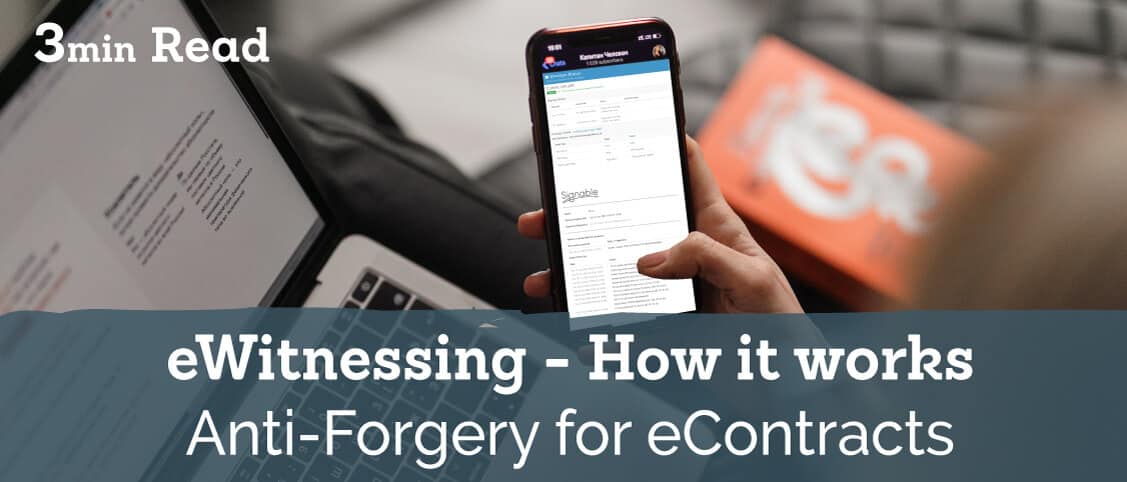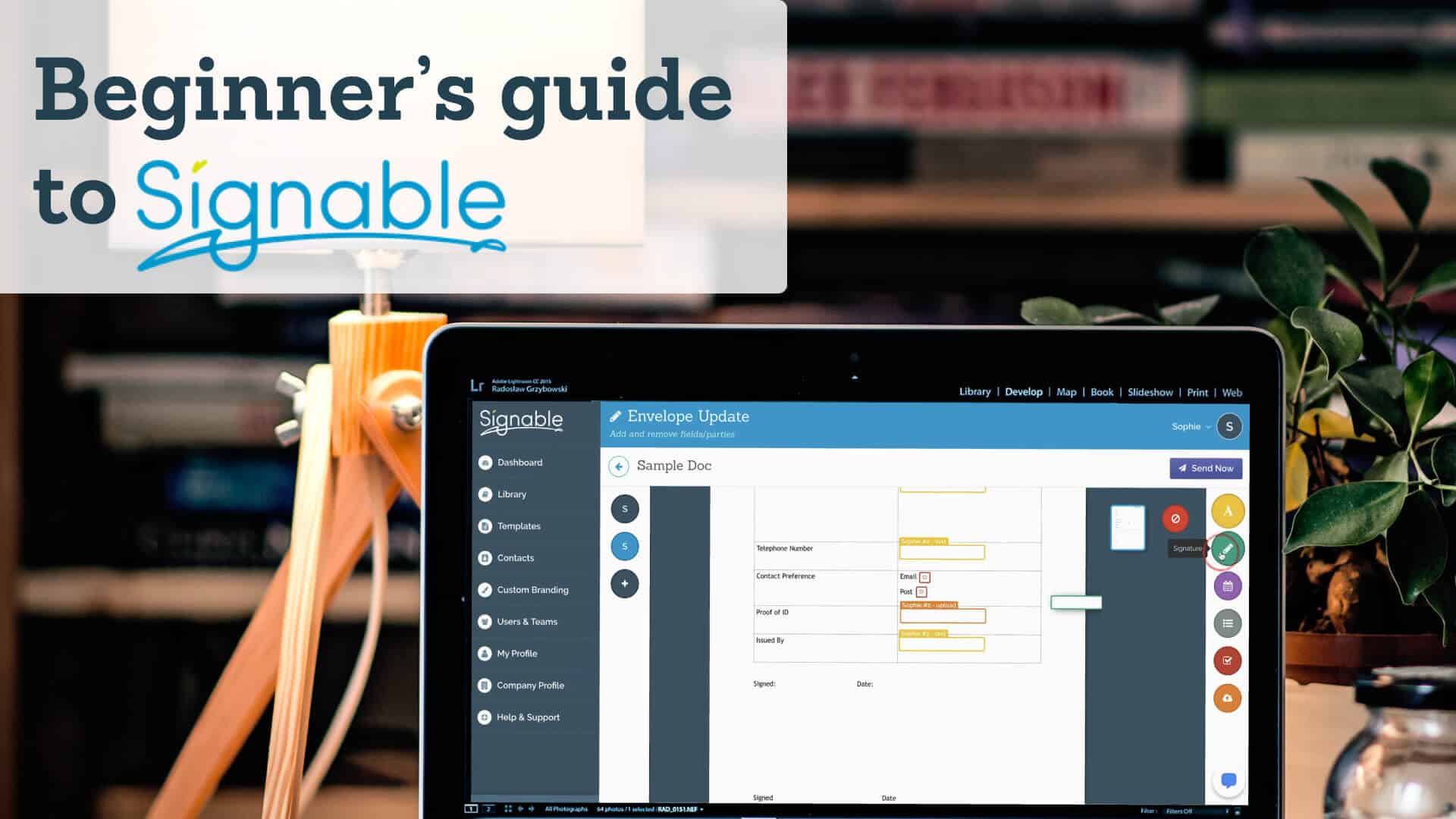How an eWitness Works – Is it a secure option?

Published:
EWitnessing for Electronic Documents – How does it work?
With many of us working in various locations, both remotely and in physical offices, there’s no guarantee whether a witness will be available to sign off an important contract.
While witnesses are hugely important to the validity of a document, ensuring that a signature has not been forged, they can cause speedbumps due to their physical nature.
The fact of the matter is that getting a witness and the signee to sign in person at the same time is difficult, especially at the moment.
So, what if you could electronically validate the signatures instead?
What is e-Witnessing?
An eWitness is actually very straightforward. It works in the same way a physical witness does, in that it’s in the form of a 3rd party who can legally approve that the signatures on a document were not forged.
The difference is that it’s not a person who electronically signs this off. Signable eWitnessing is done through advanced eWitness security software that’s provided to every document you sign with Signable.
So in this case, Signable is the witness to your documents.
How to implement eWitness
To ensure your signatures are validated via eWitnessing, you don’t actually have to do anything.
All you need to do is set up and send the document you want the eWitness to validate to the signer via Signable. To see how to electronically send and sign a document see below.
Then when your document returns to you, fully signed by the signee, you’ll be provided with full, legal eWitnessed documentation in the form seen below.
This is called an ‘Audit Trail’ and it’s your proof that the document or contract was signed legally by the person who was meant to sign it.
Signable does this through pinpointing the IP address of the signer and the time and date at which they signed. This is then tethered to the unique fingerprint that’s created for the document at the time of creation.
Meaning that this method of “Witnessing” is actually far more traceable and secure than the traditional witnessing in person.
This also means that there’s less risk involved around leaking of information, as there could be with a physical witness.
Added security measures
Electronic documents can also be password protected for added security on those high-confidentiality documents.
The password is then sent out only to the person(s) who need to sign/access the document.
